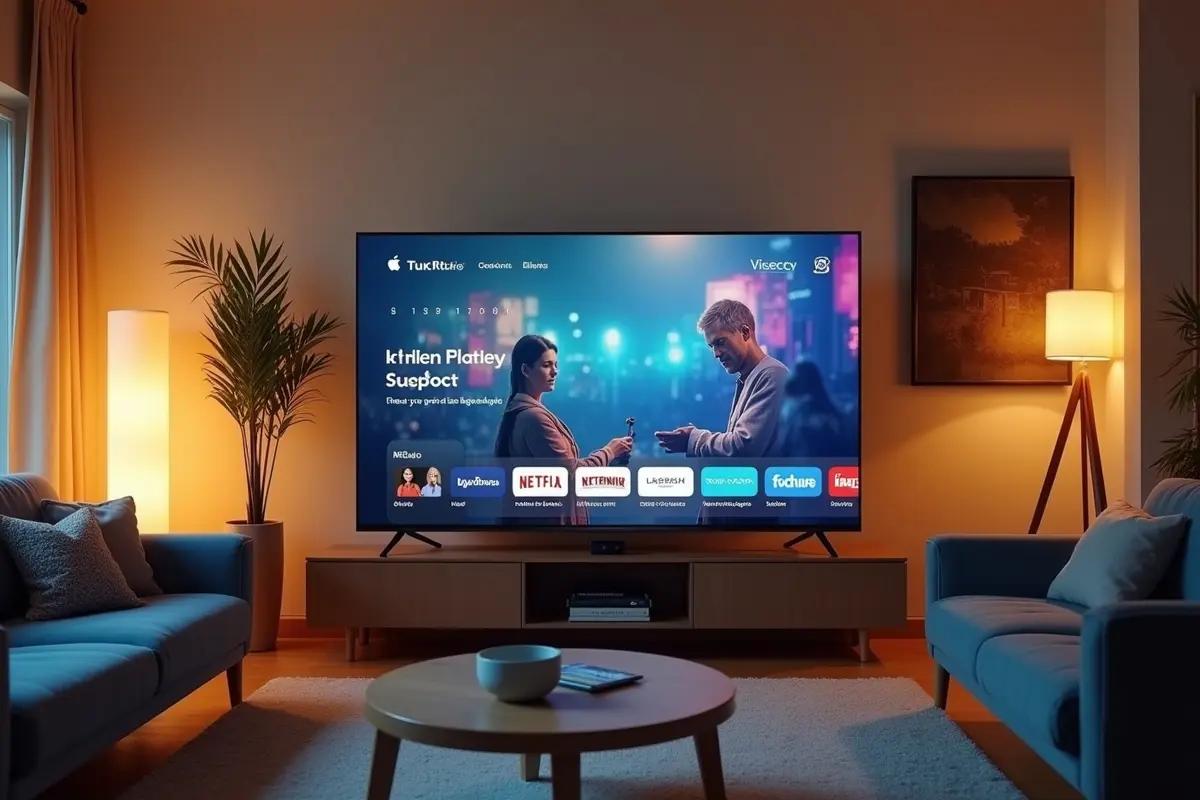In recent years, streaming television has rapidly overtaken traditional broadcast and cable platforms in terms of viewership and engagement. With the increasing adoption of smart TVs, mobile streaming, and advanced set-top boxes, audiences now prioritize on-demand content, customization, and seamless integration across devices. This shift is not only shaping the way people consume content but also how advertisers approach their campaigns.
The era of streaming TV has brought a surge of advertisers eager to tap into these highly engaged audiences, harnessing precise, data-driven targeting not previously available in traditional television. For brands, appearing as a brand ad on smart TV has become a key strategy to connect with viewers during meaningful moments in their viewing journey.
OTT platforms are central to this transformation. The flexibility for viewers to watch what they want, when they want, on virtually any device propels a dynamic advertising environment. Streaming giants continue to lead innovation by embracing ad-supported models that offer viewers cost savings while providing brands with premium placement opportunities.
Traditional media buying, once reliant on broad audience demographics and scheduled ad slots, is now giving way to a more personalized, instant approach. Programmatic media buying for streaming TV leverages real-time data and automation, offering marketers new opportunities previously unimaginable in linear TV.
Contents
Understanding Programmatic Advertising
Programmatic advertising refers to the automated buying and selling of digital ad inventory in real time. Programmatic employs sophisticated algorithms and data insights to deliver relevant, personalized ads. This enables advertisers to reach their intended audience at the optimal time. This not only increases efficiency but also maximizes return on investment for advertisers and media buyers.
At the core of programmatic advertising are real-time bidding (RTB) systems, private marketplaces, and direct deals that streamline the process, reduce manual intervention, and enhance audience targeting. Marketers leverage first- and third-party data to tailor messages to viewers’ behaviors, interests, and demographics. For streaming TV, viewers receive ads that align with their preferences. This personalization leads to better outcomes for both the advertiser and the consumer.
Programmatic advertising techniques are not restricted to display or social media. They are rapidly redefining the future of video and television advertising. By automating transactions, programmatic enables data-driven decisions to be made instantly, resulting in more effective campaigns and measurable results.
Integration of Programmatic Advertising in Streaming TV
The integration of programmatic advertising into the streaming TV ecosystem marks a pivotal step in the evolution of media buying. Industry leaders have embraced programmatic platforms, allowing for the seamless purchase and delivery of ads at scale. Brands and agencies gain the power to optimize campaigns in real time by adjusting budgets, targeting, and creative assets instantly based on viewer data insights.
Programmatic streaming is significantly enhanced by dynamic ad insertion (DAI) technology. DAI allows for the serving of custom-tailored ads directly to individual viewers as they watch content. This capability ensures advertising experiences are less intrusive and more engaging for the audience. Consequently, this approach often results in increased brand recall and higher conversion rates.
Moreover, advertisers gain access to unique inventory segments such as ad-supported video-on-demand (AVOD) and free ad-supported streaming television (FAST) channels. This access, powered by programmatic systems, enables brands to reach highly desirable audience segments that have shifted away from traditional linear models.
Benefits for Advertisers
Programmatic streaming TV brings a multitude of benefits that reflect the demands of today’s fast-evolving digital landscape:
- Enhanced Targeting: Brands can leverage granular audience data to deliver messages that match viewers’ interests, behaviors, and locations.
- Real-Time Bidding: Marketers win impressions through automated auctions, ensuring cost-efficient ad placements and allowing for flexible budget allocation based on performance.
- Cross-Device Reach: Unified measurement capabilities permit campaigns to reach and retarget viewers seamlessly across connected TVs, mobile devices, and desktops.
- Advanced Measurement and Attribution: Real-time analytics provide insights into engagement, attribution, and ROI, enabling marketers to optimize creative and strategic direction in real time.
Overall, the efficiency, precision, and scalability of programmatic streaming TV unlock new potential for brands seeking to engage the right audience at the right time.
Challenges and Considerations
Despite the many advantages, programmatic streaming TV presents several challenges for advertisers and publishers:
- Ad Fraud: As digital ad spend grows, so does the risk of fraudulent inventory, invalid traffic, and brand safety issues. Vigilant measurement, verification tools, and supply chain transparency are vital to combating fraud in the programmatic ecosystem.
- Data Privacy: The growing use of personal data for precise targeting raises privacy concerns and attracts regulatory scrutiny. Compliance with policies such as the General Data Protection Regulation (GDPR) and the California Consumer Privacy Act (CCPA) is essential.
- Inventory Quality: Ensuring that adverts are shown in a suitable context and avoiding inappropriate or low-quality content remains a critical factor. Premium inventory controls and curated marketplaces can help maintain brand integrity.
- Fragmentation: The vast number of streaming platforms and ad tech partners can make cross-platform campaign execution complex, demanding intelligent integration and holistic reporting solutions.
Addressing these challenges requires an ongoing commitment to security, compliance, and operational excellence from all stakeholders involved in the ecosystem.
Future Trends in Programmatic Streaming TV
The programmatic streaming TV sector is evolving rapidly, with several significant trends shaping its future. Artificial intelligence (AI) and machine learning are accelerating advancements in predictive targeting, campaign optimization, and creative personalization. As connected TV adoption continues to soar, more inventory across live streaming, sports, and interactive formats is becoming programmatically available.
Emerging standards for measurement and reporting will give advertisers greater clarity into campaign effectiveness. Innovative formats like shoppable ads, interactive creatives, and content partnerships are set to enhance engagement. Simultaneously, privacy-first solutions will address growing consumer concerns.
The global expansion of streaming TV is now opening up new international markets for programmatic solutions. This shift makes cross-border targeting and attribution significantly more accessible for advertisers. These advancements firmly establish streaming TV’s role within omnichannel programmatic strategies. Ultimately, this offers advertisers fresh avenues to captivate audiences across the fragmented digital landscape.
Conclusion
The union of streaming TV and programmatic media has fundamentally altered the advertising and media planning landscape. By prioritizing automation, data-driven personalization, and audience-first engagement, advertisers can meet shifting consumer expectations and optimize campaign outcomes.
The maturing of technology and viewer habits means adaptation is key. Leveraging dynamic solutions will remain crucial for success in this space. This ability to adapt will define brands and marketers in the next evolution of TV advertising.





